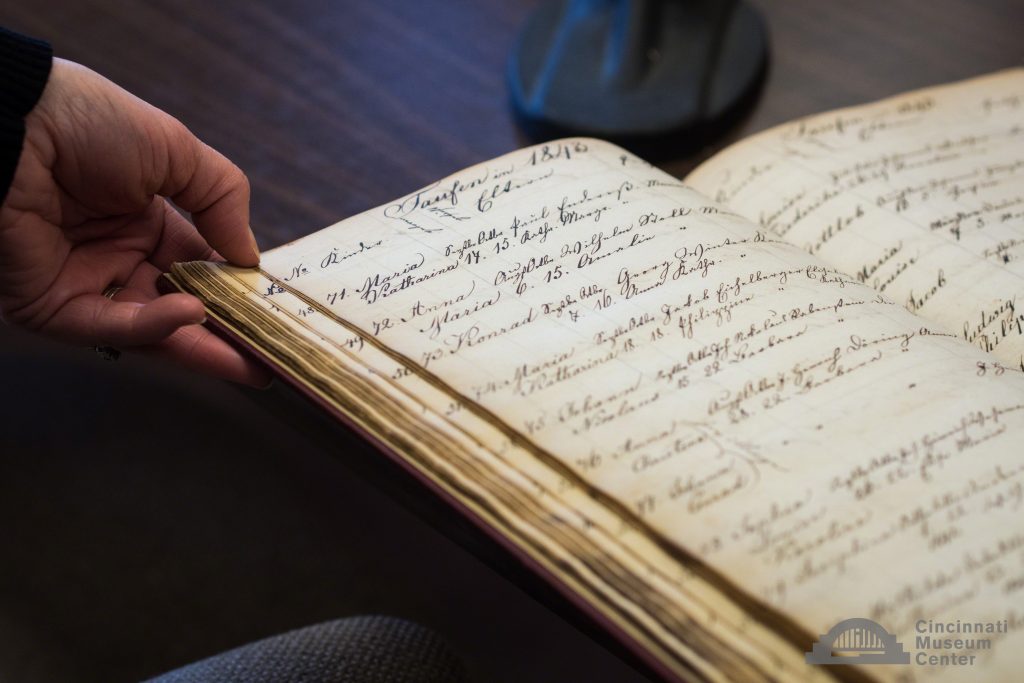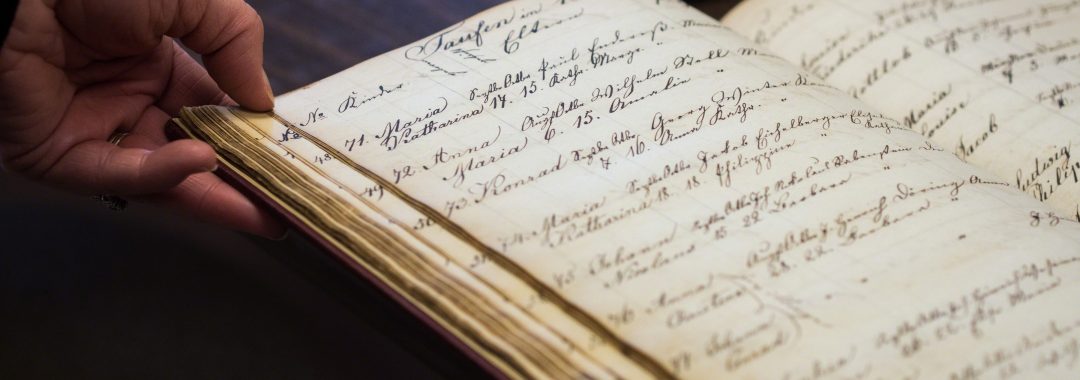
CMC Blog
From the Card Catalog to the Internet
By: Christine Engels, Archives Manager

Our current project involves describing collections and getting those collections online, so researchers can easily see what's available.
I’m often asked what I do on a daily basis. That was especially true when Union Terminal was closed for restoration. One of the big projects I’m working on, along with several coworkers, is bringing our cataloged collections’ descriptions up to date with increased online accessibility. Since the Cincinnati History Library Archive's collections date back to its founding in 1831* we have an enormous amount of archival material that we collected through the years. That also means that we have older methods of cataloging our collections, and in many cases no electronic inventory or finding aid. These older collections descriptions are now referred to as legacy finding aids and present quite a challenge to archives.
When the Society of American Archivists emerged from the Mississippi Valley Historical Association in 1936, the profession was far from being unified in its cataloging standards. Many archives were run by historians or librarians who each had their own ideas on how to arrange and describe a manuscript collection. You can see this in the way our older collections are described. Some are alphabetized by name or subject – and often the subjects they chose are outdated or obscure – while others have an order that is not readily apparent while also lacking an explanation that might have cleared up the mystery. Some legacy finding aids only describe items that the cataloger was interested in, omitting the other material that later researchers might be interested in. Thankfully today we have Describing Archives: A Content Standard (DACS) that has standardized all description. Our methodology currently is to be as unbiased and objective as possible while providing the most useful description we can for our users.
I should note that our goal here is to put up descriptions of collections, not scanned images of the collections’ contents. That’s an even larger and more expensive type of project that institutions are still creating standards for. We do include some select scans embedded in our finding aids.
The challenge facing me and my team is to fit older collections into these new standards and to get them online so researchers can see that we have them. This is a time-consuming process that requires accuracy and diligence and also requires someone with the technical know-how to set up the databases that make these finding aids searchable online. It’s all worth it in the end when I see the number of finding aids online steadily growing and I receive the emails and phone calls from researchers all over the world asking about our collections.
Museum Admission
Includes Cincinnati History Museum, Museum of Natural History & Science and The Children's Museum
| Adult: | $22.50 |
| Senior: | $15.50 |
| Child: | $15.50 |
| Member Adult: |
FREE |
| Member Child: |
FREE |
Members receive discounts!
Become a Member today to save on programs, exhibits and films throughout CMC.
Museum Hours
Open Thursday – Monday
10 a.m. to 5 p.m.
Closed Tuesday and Wednesday
Closed Thanksgiving Day and Christmas Day
Member’s-only early entry: Saturdays at 9 a.m.
Customer Service Hours:
Monday – Sunday, 9 a.m. to 5 p.m.


